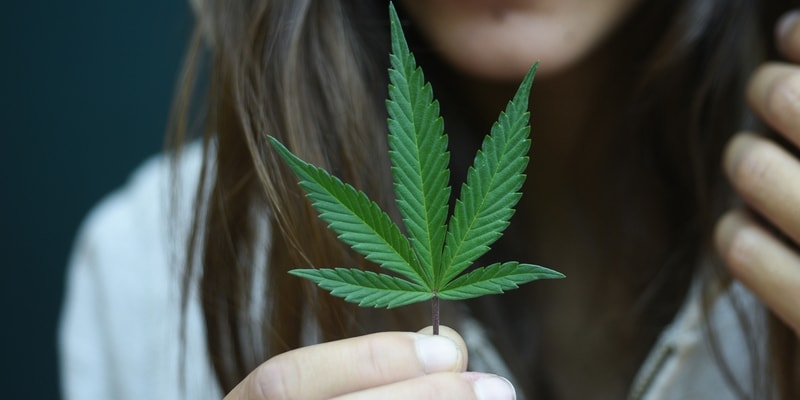Marijuana is a psychoactive drug that comes from the cannabis plant. There is evidence that the substance has been used for thousands of years for a variety of purposes, including in religious rituals. Today, marijuana is one of the most highly abused recreational drugs in the world. In the United States, marijuana is the most widely abused illegal drug. However, it is also beginning to be recognized as having certain medical uses. Marijuana can help cancer patients mitigate some of the nausea associated with chemotherapy, increase the appetite of those with AIDS, and can alleviate some forms of chronic pain.
For the most part, however, marijuana is used for purely recreational purposes. For some time now, a cultural war has raged on about whether marijuana is a relatively safe drug or a harmful intoxicant. While the vast majority of research supports the notion that marijuana is significantly less dangerous than other recreational drugs, such as cocaine and heroin, using marijuana can and often does lead to adverse consequences. Individuals with a history of addiction or mental illness who abuse marijuana can find their lives destroyed by addiction. Nonetheless, it is not certain that marijuana should necessarily be illegal, given that it has fewer harmful effects than alcohol. It should be noted too that laws incriminating marijuana possession are disproportionately used to incarcerate people of color. However, in the United States the regulations around marijuana use are beginning to loosen.

This means that it is not more important than ever for individuals to become informed about this prevalent drug. What really is marijuana? Is marijuana a harmless pastime? Is marijuana addictive? Is medical marijuana addictive? Is there a difference between marijuana and medical marijuana? Is it true that marijuana use leads to psychotic episodes? Looking at the history of the drug and current medical research can answer many of these questions.
Marijuana comes in multiple forms, from dried leaves to extractions. The primary psychoactive chemical in marijuana is THC, though marijuana contains many other psychoactive compounds as well. The drug is most frequently smoked, though it can also be orally ingested, vaporized, and even absorbed topically. When users consume marijuana, they experience a variety of psychological and physical effects, which are referred to as a “high.” Most people report feelings of relaxation and euphoria, a distorted perception of time and space, and an increased sensitivity to bodily sensations. However, the drug can also have adverse effects, causing anxiety, dissociated mental states, and memory problems. Unlike many other well-known recreational drugs, withdrawal from marijuana is rarely severe and it is not possible to overdose on the drug. However, it is possible to abuse the drug. Regular marijuana abuse and marijuana addiction can lead to a decreased quality of life.
The cannabis plant, which is native to the Indian subcontinent and Central Asia, has been used since the Neolithic Age in the production of fabrics, ropes, and a variety of other materials. There is evidence indicating that it was also utilized for its psychoactive properties as far back as the Bronze Age by Proto-Indo-European tribes living in the Ukrainian Steppe. The ancient Assyrians were introduced to the drug by the Iranians, who used it in religious ceremonies. The Iranians also introduced the drug to other ancient civilizations, including the Scythians, Thracians and Dacians. The Dacians used marijuana to induce trance-like states for their shamans. The drug was also used in China as far back as 2800 BC, and in India it was widely used for therapeutic purposes. Archaeologists have found evidence of marijuana smoking throughout much of ancient civilization, where it was used for purposes ranging from spiritual to medicinal.

During the 20th century, marijuana developed a thriving culture around its use. The drug had an important role in the counterculture of the 1960s, being widely associated with hippies. Years later, marijuana is still widely associated with musicians, artists, and other creative fields. Genres of art have also developed around the drug, including “stoner films,” reggae, and jazz. Marijuana is in fact such an important part of youth culture that much of the United States celebrates a holiday in its honor on April 20, known as 420. The stigma surrounding marijuana use, its status as an illegal drug, and concerns around possible dangers of the drug existed in tandem with a cultural celebration of the substance, which for much of this time was the most used illegal drug in the United States.
In the 20th century, the United States intensified its prosecution of marijuana-related offenses during the War on Drugs. While some countries followed suit, a few outliers allowed for recreational use, including Uruguay and the Netherlands. In October 2018, Canada passed legislation to make recreational use legal. The movement to recognize marijuana abuse as a public health problem rather than a criminal offense has been getting stronger, with a number of other countries beginning to decriminalize marijuana use, including Mexico, South Africa, and the Czech Republic. In the United States, medical marijuana is legal in some states, a few others, including California, have recently passed legislation to decriminalize it.
Most of the marijuana that is sold in the United States is grown in Mexico or Canada and smuggled into the country. However, in states where the drug has been decriminalized, such as California, there is a thriving world of cannabis farms. In its most basic form, marijuana consists of the dried flowers, stems, and leaves of the cannabis plant. However, a variety of other marijuana products are often sold. Edibles, which are consumed orally, are made by extracting the active cannabinoids from cannabis and dissolving them in fat. This cannabis-infused butter or oil can then be used to create a variety of foods and drinks. Other common marijuana products include hashish, a cannabis concentrate that is produced by compressing or purifying the resin glands of the plant. In North America, the dried herb form of cannabis is the most popular method of consumption, whereas in Europe hashish is the more popular product.
Given its ubiquity, it should come as no surprise that marijuana is known by many names. While licensed dispensaries that sell medical marijuana often use specific strain names to refer to their products, illegal dealers are prone to using slang terms. Distributors on the black market use a wide variety of code names for marijuana to avoid being detected by law enforcement personnel. Marijuana is also highly popular among young people, and the terms used in youthful drug culture are constantly evolving. While there is enormous regional variation across cultures, below is a list of some of the more common terms for marijuana:
The most traditional and stereotypical type of marijuana consumption occurs when people get high using the dried flowers, leaves, and stems of the cannabis plant. The most common route of administration is smoking. Users place the dried flower in a pipe or roll it into a cigarette, which in marijuana culture is referred to as a joint. Sometimes drug users roll cigarettes containing mixtures of marijuana and other drugs, such as tobacco, to form “spliffs.” This combination can set off a drug interaction that increases the likelihood that someone will become addicted to marijuana. While smoking dried cannabis flower is a quick-acting and effective way to get high, it also releases a strong odor into the air. Marijuana users who want to avoid detection often resort to other methods.
Shatter is a form of marijuana that is produced through an extraction method. Shatter manufacturers create the product by running a solvent, such as propane or butane, through the dried plant. The substance that remains is spread out and left to dry. After some time, it is broken up into pieces that resemble glass shards. Shatter has extremely high concentrations of THC, the strongest psychoactive cannabinoid in marijuana, so it can lead to more intense effects. However, it cannot be smoked without a specialized bong and a butane torch that vaporizes the glass. Shatter is often used by individuals who have developed a tolerance to less powerful forms of marijuana. If anyone asks, “Is marijuana physically addictive?” you can point out the high demand for shatter among regular marijuana users.
Wax is another form of marijuana extraction. Unlike the glass-like substance shatter, wax is so-named because of its waxy consistency. It is significantly more potent than cannabis flower. Wax is also dangerous because the solvents used to create it leave byproducts. When users consume marijuana wax, they also consume these dangerous byproducts. The effects of these solvents, which include butane, can lead to health complications such as brain damage.
Marijuana oil is yet another extraction product. It can be derived from traditional flowers, though sometimes manufacturers use hashish as well. The most common solvents used for extraction are butane and ethanol. Marijuana oil can be consumed via smoking, vaporizing, and even eating. This product is increasingly popular. In California, 40% of marijuana retailers’ profits are from marijuana oil sales.
Marijuana tincture, like marijuana oil, is meant to be consumed orally. However, the crucial difference is that tincture is generally used on its own rather than as an ingredient in cooking. The substance is often a mixture of glycerin oil and THC. Users take one to two droplets and wait for the effects to kick in. Tincture is most often consumed by those using marijuana medicinally, though it is sometimes used by recreational users as well.
Edibles are formed by dissolving the active cannabinoids of the plant in a fatty substance, such as butter or oil. The butter or oil, then infused with THC and other psychoactive components of cannabis, can be added to just about any recipe. It is not uncommon for marijuana oil to be used in cookies, brownies, soft drinks, and even hot sauce. Consuming marijuana orally is a slow-acting route of administration. However, the effects can last much longer than when users smoke marijuana. The potency of an edible marijuana product can also be unpredictable, given that dosage is harder to measure. These products can be dangerous and using them carelessly can be one of the signs of marijuana addiction.
When people consume marijuana, receptors in the brain that react to THC produce feelings of euphoria and relaxation. Individuals who regularly consume marijuana actually increase the number of these receptors, meaning that they require higher doses of marijuana to achieve their desired high. As a result, it is very easy for this apparently pleasurable drug to be used abusively. Long term marijuana use also impairs cognitive abilities and can even lead to a drop in IQ, especially among those who started in adolescence, which can further increase the likelihood that an individual will make unsafe decisions regarding their marijuana consumption.
Furthermore, despite a widespread belief that marijuana is not addictive, quitting marijuana does in fact lead to a variety of withdrawal effects.
These include:

According to the National Institute on Drug Abuse, between 9% and 30% of marijuana users suffer from a substance use disorder. While substance use disorders vary in severity, and a marijuana use disorder is generally less severe than an opioid use disorder, the sense of helplessness and abject demoralization is the same. A substance use disorder occurs when an individual is unable to control or manage their own substance use. People who suffer from substance use disorder also begin to experience adverse consequences in their own lives as a result of their substance abuse. For this individuals, exerting willpower is rarely enough to mitigate marijuana addiction symptoms. It is best to seek marijuana addiction treatment so that one can develop the necessary skills and social support system to achieve sobriety and begin rebuilding ones life.